Intercropping Boosts Farm Yields 20-50% While Building Resilience

TL;DR: Cover crops planted between main harvests reduce soil erosion by 68%, sequester significant carbon, and restore degraded farmland. Despite proven environmental benefits, adoption faces economic barriers requiring policy innovation and market development to scale.
Between the autumn harvest and spring planting, millions of acres of farmland sit bare and vulnerable. The soil erodes, nutrients leach away, and carbon escapes into the atmosphere. But a growing revolution in agriculture is transforming these dormant months into a period of active healing. Cover cropping—planting specific crops between main growing seasons to restore soil rather than for harvest—represents one of agriculture's most promising answers to soil degradation, climate change, and the sustainability crisis threatening our food systems.
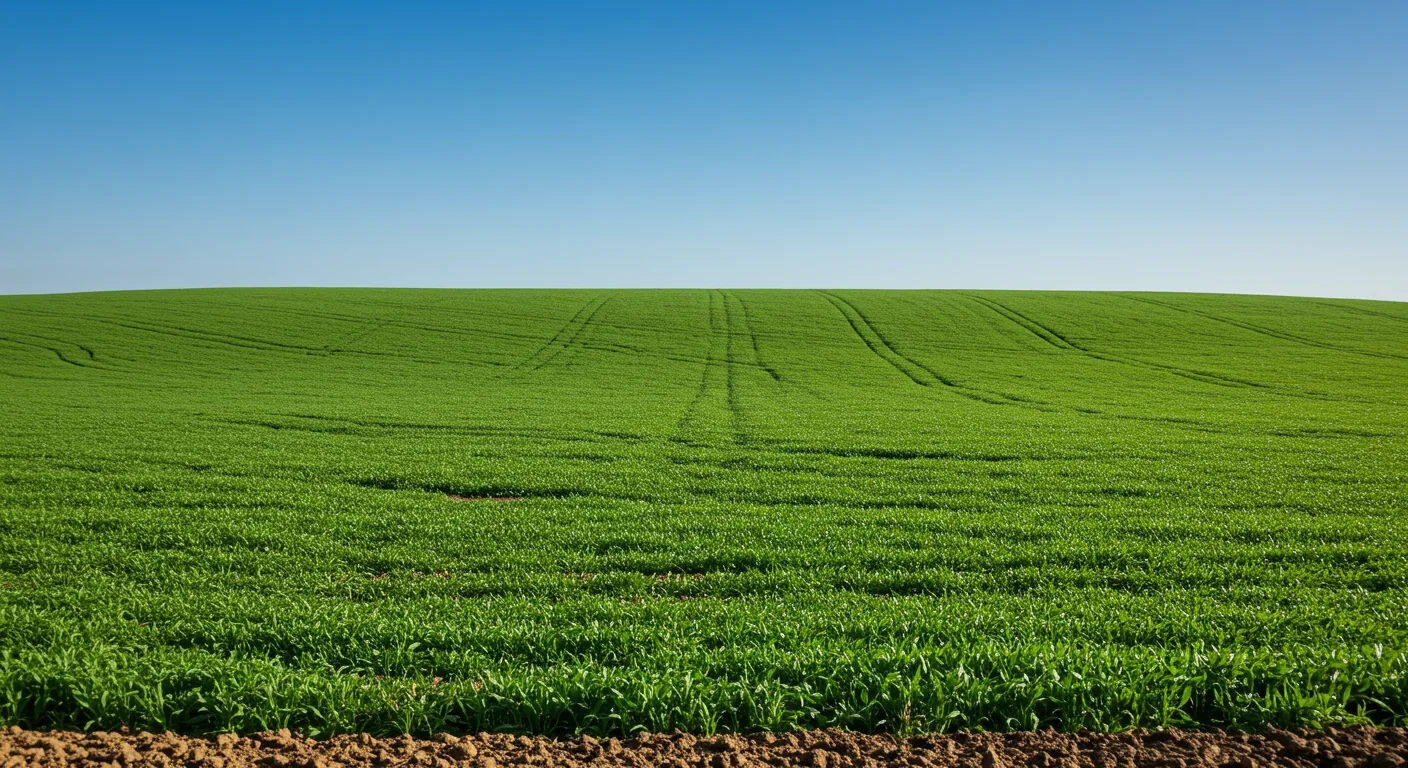
The science is remarkably clear. A comprehensive Iowa State University study analyzing over 150 field trials found that cover crops reduced soil carbon loss through erosion by an impressive 68%. At the same time, they increased soil organic carbon stocks by 14% in the critical top 15 centimeters. These aren't marginal improvements—they're transformative changes that address some of agriculture's most pressing challenges.
Cover crops work through elegantly simple mechanisms that mimic natural ecosystems. When farmers plant species like winter rye, crimson clover, or hairy vetch after harvesting their cash crops, these plants create a living protective layer over the soil. Their roots penetrate deep into the earth, creating channels that improve water infiltration and soil structure. Their leaves shade the ground, suppressing weeds and moderating soil temperature. When they die or are terminated before the next planting, their biomass becomes food for soil microorganisms, building the organic matter that gives healthy soil its fertility.
The erosion benefits alone justify the practice. Soil erosion costs American farmers an estimated $44 billion annually in lost productivity, yet it's a largely invisible crisis. Rain and wind strip away topsoil at rates far exceeding natural formation—in some regions, decades of soil are lost in a single storm. Cover crops act as armor. Their dense root systems bind soil particles together, while their canopy breaks the force of raindrops before they can dislodge soil. Research published in Global Change Biology found that this protective effect is especially pronounced on sloping land, where erosion risks are highest.
Cover crops reduced soil carbon loss through erosion by 68% while increasing soil organic carbon stocks by 14%—transformative changes that address agriculture's sustainability crisis.
Beyond erosion control, cover crops function as powerful carbon capture machines. Through photosynthesis, they pull CO₂ from the atmosphere and convert it into plant tissue. When that tissue decomposes or is incorporated into the soil, much of its carbon remains sequestered underground. Long-term modeling using RothC and C-Tool simulations predicts that planting cover crops every fourth year could sequester 120-150 tons of carbon per hectare over 50 years in temperate croplands.
The global implications are staggering. Machine learning analysis suggests that if cover crops were widely adopted on suitable farmland worldwide, they could reduce soil carbon erosion by an average of 25%. Given that agriculture accounts for roughly 10% of global greenhouse gas emissions, cover cropping represents a scalable climate solution that requires no new technology—just a shift in farming practices.
Yet the carbon story isn't entirely straightforward. Recent research from European field trials reveals a nuanced trade-off: while cover crops sequester carbon and reduce nutrient leaching, they can slightly increase direct N₂O emissions—a potent greenhouse gas. Winter rye, for instance, with its high biomass production and nitrogen uptake, showed cumulative emissions of 4.5 grams of N₂O per hectare compared to 1.9 grams for vetch. The key factor? Residue management. When cover crop residues are plowed deeply into the soil, microbial decomposition accelerates, triggering emission spikes. But when residues remain on the surface or are incorporated shallowly, emissions decrease while carbon benefits persist.
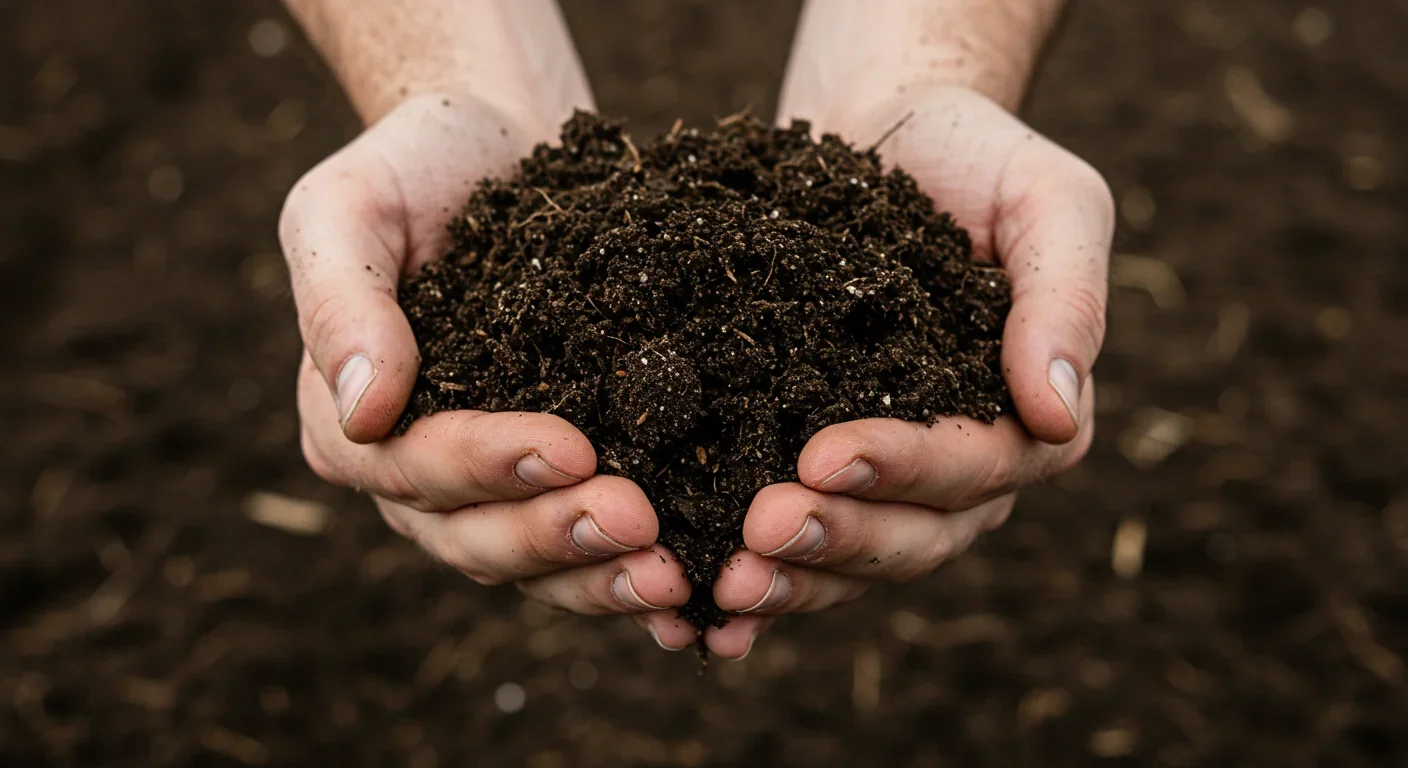
For all their environmental benefits, cover crops face a fundamental economic challenge: they must at least break even in the short term, or widespread adoption will remain elusive. The reality on the ground is complex and highly variable.
Analysis from Iowa State's Center for Agricultural and Rural Development found that annual net returns to cover crops vary dramatically based on yields, planting and termination costs, and available cost-share payments. In 2021, Minnesota farmers reported average costs of $55 per acre for cover crops, including $20 for seed and the remainder for fuel, equipment, and labor. For many, especially those new to the practice, these upfront costs exceed immediate returns.
Cost-share programs help bridge the gap. The USDA's Natural Resources Conservation Service and state agricultural departments offer financial incentives to farmers who adopt conservation practices. Yet research consistently shows these payments rarely cover all private costs. They're critical for encouraging initial adoption, but insufficient for making cover crops financially self-sustaining.
"Cover crops cannot be scaled up to mainstream agriculture if the practice does not at least break-even in the short term."
— Iowa State University Research Conclusions
The learning curve matters enormously. Data from Minnesota's Center for Farm Financial Management reveals that farmers with more than five years of cover crop experience had measurably lower costs than those with less than five years of experience. As growers optimize their species selection, planting timing, and termination methods, the practice becomes more profitable. Some achieve positive returns through creative revenue streams: grazing livestock on cover crops during winter, harvesting them for forage, or even collecting seed for sale.
Not all cover crops deliver the same benefits, and choosing the right species—or mix of species—is critical to success. The decision depends on climate, soil type, the following cash crop, and specific goals.
Grasses like winter rye, oats, and annual ryegrass excel at erosion control and scavenging excess nitrogen. Rye, cold-hardy and vigorous, establishes quickly and produces abundant biomass. It's the workhorse of Midwest grain operations. Oats, by contrast, winterkill in cold climates, providing a natural termination that simplifies spring planting. Research from German field sites found oats achieved strong nitrogen uptake with lower N₂O emissions than rye, making them an attractive choice where greenhouse gas impacts matter.
Legumes such as crimson clover, hairy vetch, and field peas bring a unique superpower: biological nitrogen fixation. Through symbiotic relationships with soil bacteria, they convert atmospheric nitrogen into plant-available forms, potentially reducing or eliminating the need for synthetic fertilizer on subsequent crops. Studies of summer-seeded legumes showed they can provide 40-100 pounds of nitrogen per acre to following corn crops, though effectiveness varies with termination timing and incorporation method.
Brassicas like radishes and turnips penetrate compacted soil layers with their thick taproots, creating natural tillage. When they decompose, they leave channels that improve drainage and root penetration for cash crops. They're especially valuable in no-till systems where mechanical cultivation is minimized.
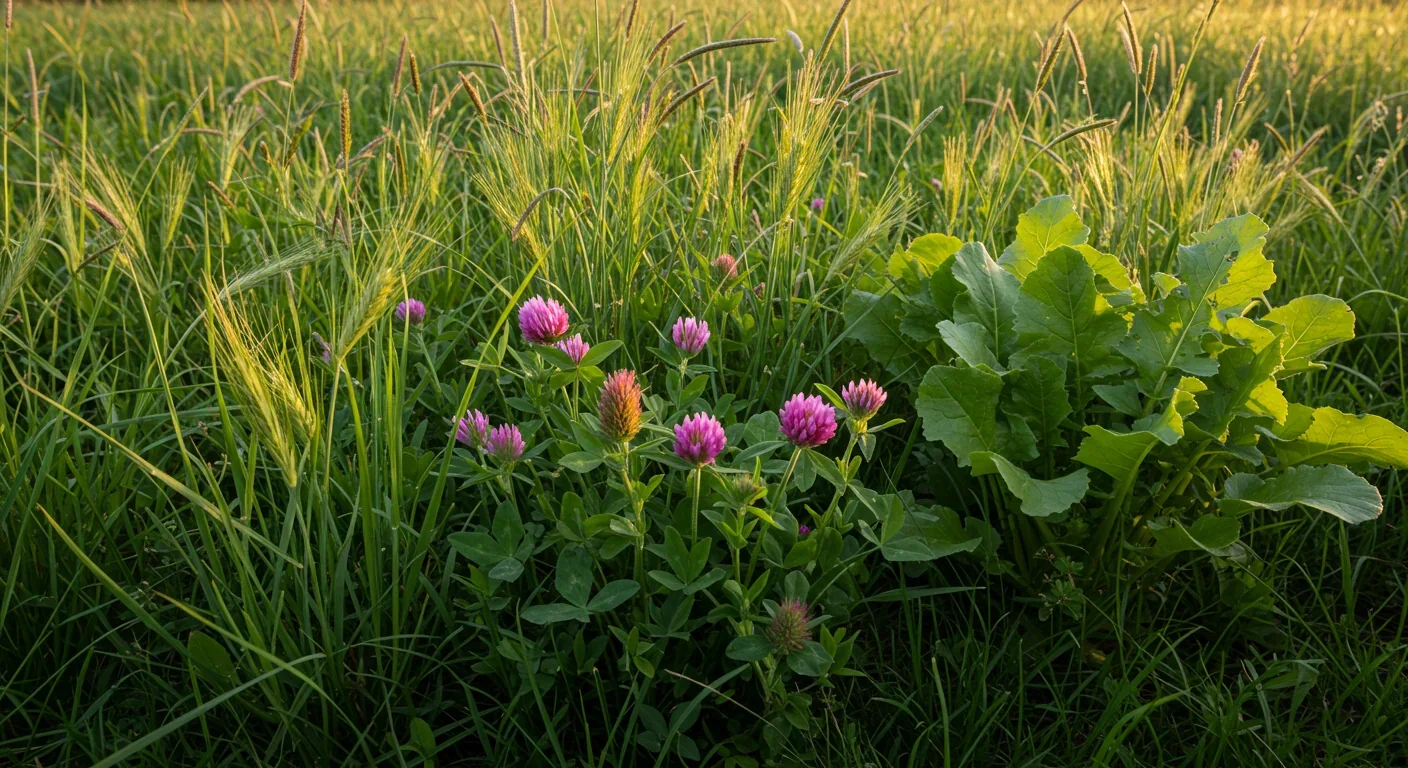
Increasingly, farmers plant multi-species mixes that combine the strengths of different cover crops. A typical mix might include rye for biomass and erosion control, vetch for nitrogen, and radish for soil structure. Farmer-led research in the Western Corn Belt suggests these diverse cocktails support more robust soil microbial communities and provide redundancy if one species fails due to weather extremes.
Cover cropping scales remarkably well, from home vegetable gardens to thousand-acre grain operations, though strategies differ by context.
Home gardeners have perhaps the easiest entry. After harvesting summer tomatoes and squash, they can broadcast crimson clover or winter rye, let it grow through fall and winter, then cut it back in spring before planting. The process requires minimal equipment—often just a bag of seed and a rake. The benefits include weed suppression, erosion prevention on sloped beds, and a ready source of green manure to incorporate before spring planting. Oregon State University's Forage Information System provides region-specific guidance for small-scale growers.
Mid-scale diversified farms often integrate cover crops into complex rotations. A vegetable farmer might plant oats and peas after early-season lettuce, graze them with chickens or sheep, then terminate them before fall brassicas. These systems leverage cover crops for multiple purposes: soil building, livestock feed, pest and disease suppression, and biodiversity. The management is more intricate, requiring careful timing and species matching.
Large-scale commodity growers face different constraints. With thousands of acres to manage, planting and termination must happen quickly within narrow windows. Many rely on aerial seeding, broadcasting cover crop seed from planes into standing corn or soybeans weeks before harvest. This technique, called interseeding or overseeding, gives covers a head start but requires precise timing to avoid shading the cash crop. Termination typically involves herbicides or roller-crimpers—mechanical devices that flatten and crimp stems, creating a mat of residue that suppresses weeds while the cash crop emerges.
The logistics are daunting. Research from Illinois documents that successful large-scale adoption requires access to specialized equipment, reliable seed supply chains, and agronomic support. Farmers transitioning to cover crops often start with a few hundred acres to build experience before expanding.
Farmers with more than five years of cover crop experience have measurably lower costs than beginners—the learning curve is real, but the payoff comes with time.
Despite documented benefits, cover crop adoption remains limited, and a troubling pattern is emerging: some farmers who try the practice abandon it. Recent research from Iowa found that while cover crop use is growing, a significant portion of adopters don't intend to continue. Understanding why reveals critical barriers.
Yield drag tops the list of concerns. If a cover crop isn't terminated early enough, or if spring weather delays termination, the cover can compete with the cash crop for water and nutrients, reducing yields. In moisture-limited regions like California's Central Valley, this competition can be severe. Some studies show no yield benefit or even slight decreases, especially in the first few years before soil structure improves.
Management complexity deters others. Cover cropping adds tasks to an already demanding schedule: selecting species, sourcing seed, calibrating equipment, timing planting and termination. For farmers stretched thin, the learning curve feels steep. Extension services help, but personalized guidance is often lacking.
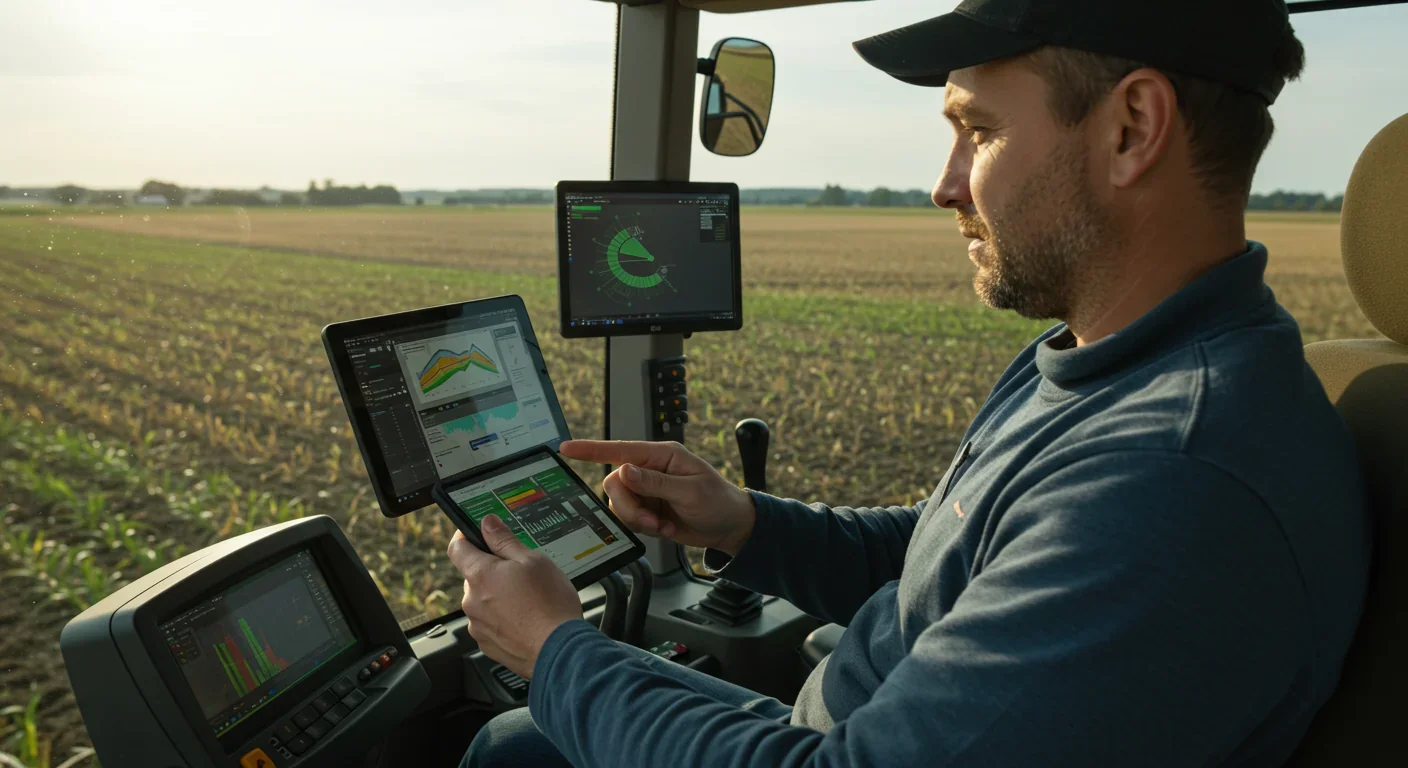
Upfront costs without immediate payback frustrate farmers facing tight margins. Seed, fuel, and labor expenses are certain and immediate; benefits like improved soil structure and reduced erosion are gradual and hard to quantify. As Iowa State economists emphasize, cover crops can't scale to mainstream agriculture unless they break even in the short term.
Climate and geography constrain where cover crops work well. Short growing seasons in northern states leave little time for covers to establish before winter. Dry climates limit biomass production. Heavy clay soils slow root penetration. Frontiers research comparing different regions concluded that hydroclimatology—the interaction of water availability and temperature—should guide cover crop decisions to prevent cash crop yield loss.
Governments and NGOs recognize cover crops as a priority conservation practice, but policy design struggles to balance farmer autonomy with environmental goals.
The USDA Conservation Stewardship Program (CSP) and Environmental Quality Incentives Program (EQIP) provide cost-share payments ranging from $30 to $75 per acre, depending on state and cover crop type. These programs have catalyzed adoption, bringing cover crops from a niche practice to mainstream conversation. Yet research across multiple states indicates payments often fall short of covering full costs, particularly for new adopters still learning.
Carbon markets offer emerging opportunities. Companies like Indigo Ag, Nori, and Truterra pay farmers to sequester carbon through practices like cover cropping. Rates vary—typically $10-30 per ton of CO₂-equivalent—and require verification through soil sampling or modeling. Some see this as cover crops' economic future; skeptics worry about market volatility, measurement challenges, and whether credits truly represent additional carbon storage. Iowa State analysis argues that erosion prevention should be valued separately from biomass sequestration in carbon markets, as the mechanisms differ and both provide climate benefits.
Crop insurance reforms could accelerate adoption. Currently, insurance policies sometimes penalize cover crop users if termination delays spring planting or if covers are perceived to increase risk. Adjusting policies to recognize cover crops as risk-reducing practices—which data increasingly supports—would remove a disincentive.
At the local level, watershed groups and soil health coalitions pool resources to negotiate bulk seed purchases, share equipment, and organize learning networks. These grassroots efforts often outperform top-down programs by addressing farmers' real-world constraints.
Precision agriculture tools are transforming cover crop management from an art to a science. Satellite imagery now allows farmers to monitor cover crop biomass throughout the growing season, identifying areas that established poorly and may need additional seeding. Variable-rate seeding technology adjusts seed density on-the-fly based on soil type, elevation, and historical yield data, optimizing establishment while reducing costs.
Drones equipped with multispectral cameras assess cover crop nitrogen content, helping farmers predict how much fertilizer the following cash crop will need. Soil moisture sensors integrated with weather forecasts inform termination timing, balancing the desire for maximum biomass against the risk of moisture depletion.
"Agronomic simulations suggest that sustained cover crop use is likely to result in soybean yield increases, and generates positive environmental externalities: reduced nitrate leaching and soil erosion."
— Iowa State Research Conclusions
Machine learning models are getting better at predicting which cover crop species will perform best in specific conditions. By analyzing decades of trial data, weather patterns, and soil characteristics, these models can recommend optimized mixes tailored to individual fields. Decision support tools from USDA-NRCS and SARE combine economic modeling with agronomic guidance, helping farmers run what-if scenarios before committing.
Biotechnology may also play a role. Researchers are developing cover crop varieties with enhanced traits: deeper roots for better soil penetration, faster spring kill for easier termination, higher nitrogen fixation for greater fertility benefits. If these prove successful and gain farmer acceptance, they could address some of the management challenges that currently limit adoption.
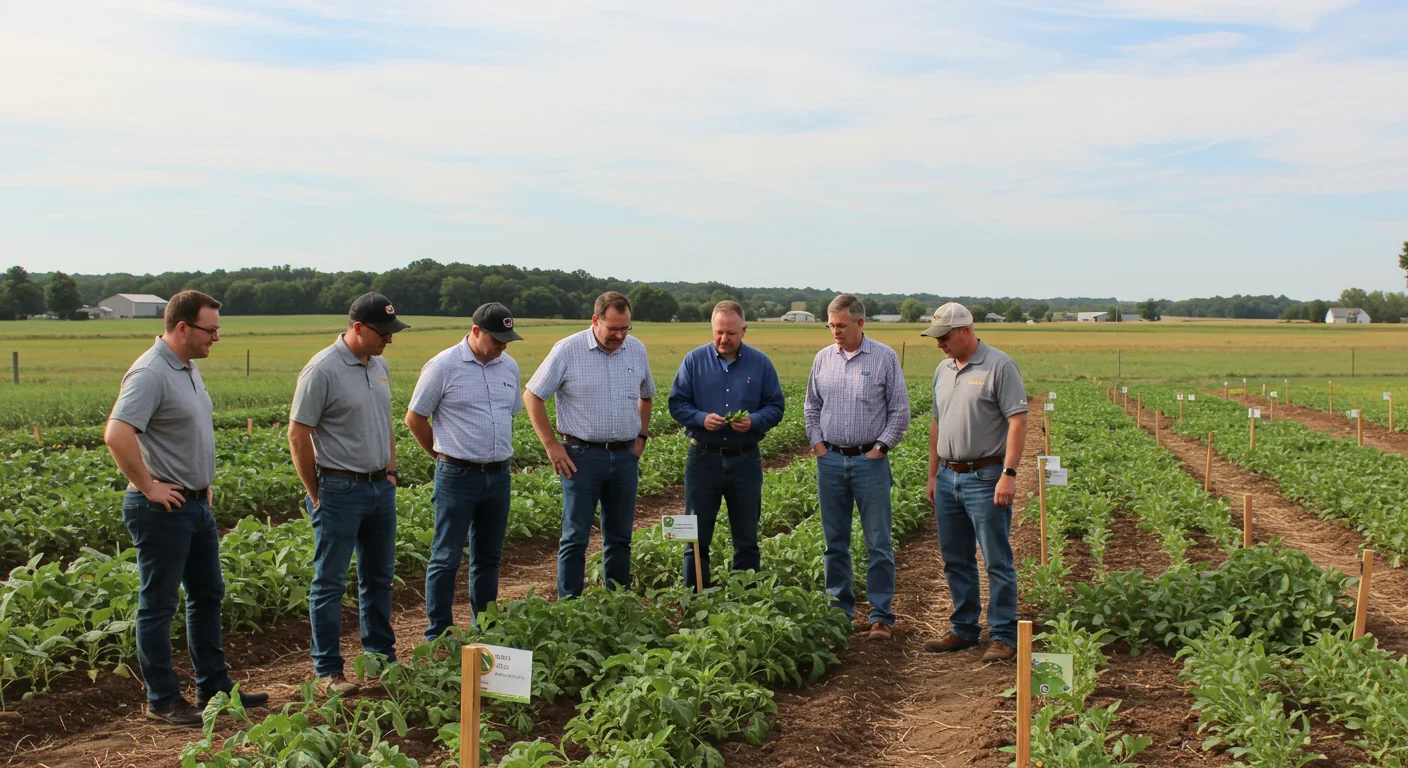
Numbers and science matter, but cover cropping also represents a cultural shift. Farmers who adopt the practice often describe it as part of a broader commitment to stewardship and long-term thinking. This mindset spreads through social networks.
Farmer-led research trials in the Western Corn Belt reveal that peer-to-peer knowledge sharing drives adoption more effectively than university extension alone. When a respected neighbor achieves success with cover crops—documenting improved soil tilth, reduced erosion, or lower fertilizer bills—others take notice. Field days, where farmers gather to observe and discuss cover crop plots, build collective expertise and confidence.
Online communities amplify this effect. Facebook groups, podcasts, and YouTube channels dedicated to regenerative agriculture connect farmers across regions, allowing them to share real-time observations, troubleshoot problems, and celebrate successes. The transparency of these exchanges—including frank discussions of failures—builds trust in ways that glossy marketing materials never could.
Women farmers and beginning farmers are disproportionately represented among cover crop adopters in some surveys, suggesting the practice appeals to those seeking alternatives to conventional input-intensive models. As farm demographics shift, with younger and more diverse operators entering the field, cover crops may gain further momentum.
While this article focuses primarily on North American contexts, cover cropping is a global phenomenon, adapted to vastly different environments.
In Europe, green cover mandates under the Common Agricultural Policy require farmers receiving subsidies to maintain soil cover during fallow periods. This has driven widespread adoption, though research from Germany and beyond shows wide variation in implementation quality and outcomes. Frost-tolerant species dominate northern regions; Mediterranean farmers favor drought-resistant varieties like vetch and berseem clover.
Sub-Saharan Africa faces unique challenges and opportunities. With degraded soils threatening food security, cover crops offer a low-input restoration strategy. Leguminous covers like lablab and mucuna have shown success in smallholder systems, fixing nitrogen and suppressing the parasitic weed Striga. Yet seed access, livestock grazing pressure, and competing uses for crop residues complicate adoption.
Australia has pioneered summer cover cropping in subtropical grain regions, using species like millet and cowpea to protect soil during the wet season. Innovations in species selection for arid environments demonstrate that cover cropping principles apply even where water is scarce, though the specifics differ dramatically.
China and India, with vast agricultural sectors and severe soil degradation in many regions, are beginning to explore cover crops as part of sustainable intensification strategies. Success will depend on tailoring practices to local crops (rice, wheat, vegetables), farm sizes, and socioeconomic contexts.
Adoption isn't solely a farmer decision—it's shaped by the broader food system. Commodity markets reward volume and uniformity, not soil health. Processors, elevators, and retailers have little incentive to pay premiums for grain grown with cover crops, even if the environmental benefits are substantial. Until market signals shift—through consumer demand, regulation, or supply chain initiatives—farmers bear all the costs of cover cropping while society captures many of the benefits.
Crop consultants and agronomists, many trained in conventional high-input systems, sometimes lack familiarity with cover crops and may not recommend them. Seed companies focus R&D on cash crops, not covers. Equipment manufacturers design machinery optimized for bare-soil planting. These institutional inertias slow the transition.
Land tenure complicates matters. Farmers renting land on short-term leases have little incentive to invest in long-term soil health improvements that benefit the landowner more than themselves. Restructuring lease agreements to reward conservation practices could align incentives.
Until market signals shift to value soil health, farmers bear all the costs of cover cropping while society captures the environmental benefits—a fundamental misalignment of incentives.
The path forward requires action on multiple fronts.
Research must continue refining best practices, particularly around species selection, termination timing, and integration with no-till and organic systems. Questions remain about optimal cover crop rotations, the long-term dynamics of soil carbon under different management regimes, and how climate change will alter cover crop performance.
Extension and education need more resources. Farmers need region-specific, crop-specific guidance delivered through trusted channels. Demonstrations on working farms, decision tools, and troubleshooting support are critical. Training the next generation of agronomists to see cover crops as standard practice, not an add-on, will shift norms.
Policy innovation should explore results-based payments that reward measured soil health improvements rather than simply reimbursing costs. Ecosystem service markets, if designed carefully to ensure additionality and avoid greenwashing, could provide reliable revenue streams. Crop insurance and disaster assistance programs should explicitly recognize cover crops as risk-reduction tools.
Market development is essential. Food companies and retailers increasingly make sustainability commitments; translating those into procurement standards and price premiums for regeneratively grown crops would create pull from the demand side. Transparency and traceability systems can connect consumers willing to pay more for sustainably produced food with farmers adopting practices like cover cropping.
Cultural change may be the deepest shift required. Agriculture has long been measured by yield per acre and profit per season. Cover cropping invites a longer view: soil as a living legacy, farms as ecosystems, success measured over generations. This resonates with many farmers' values but clashes with economic pressures and conventional metrics.
Cover crops force us to reconsider what productivity means. By the standards of industrial agriculture, they're unproductive—they don't generate revenue, they consume inputs, they complicate logistics. Yet by the standards of ecological agriculture, they're profoundly productive: building fertility, preventing erosion, sequestering carbon, supporting biodiversity, and making farms more resilient.
The evidence is clear: cover cropping works. It reduces erosion by up to 68%, sequesters meaningful amounts of carbon, improves water infiltration, suppresses weeds, and can reduce fertilizer needs. The challenges are equally clear: variable short-term economics, management complexity, knowledge gaps, and systemic barriers. Overcoming these requires farmers willing to experiment, researchers committed to practical solutions, policymakers who recognize soil health as infrastructure, and consumers who connect their food choices to the land.
Between harvests, millions of acres lie waiting. The question is whether we leave them bare and vulnerable or plant them with purpose, turning agriculture's fallow months into a season of healing. The answer will shape not just the future of farming, but the health of our soil, the stability of our climate, and the resilience of our food systems for generations to come.

Curiosity rover detects mysterious methane spikes on Mars that vanish within hours, defying atmospheric models. Scientists debate whether the source is hidden microbial life or geological processes, while new research reveals UV-activated dust rapidly destroys the gas.

CMA is a selective cellular cleanup system that targets damaged proteins for degradation. As we age, CMA declines—leading to toxic protein accumulation and neurodegeneration. Scientists are developing therapies to restore CMA function and potentially prevent brain diseases.

Intercropping boosts farm yields by 20-50% by growing multiple crops together, using complementary resource use, nitrogen fixation, and pest suppression to build resilience against climate shocks while reducing costs.

The Baader-Meinhof phenomenon explains why newly learned information suddenly seems everywhere. This frequency illusion results from selective attention and confirmation bias—adaptive evolutionary mechanisms now amplified by social media algorithms.
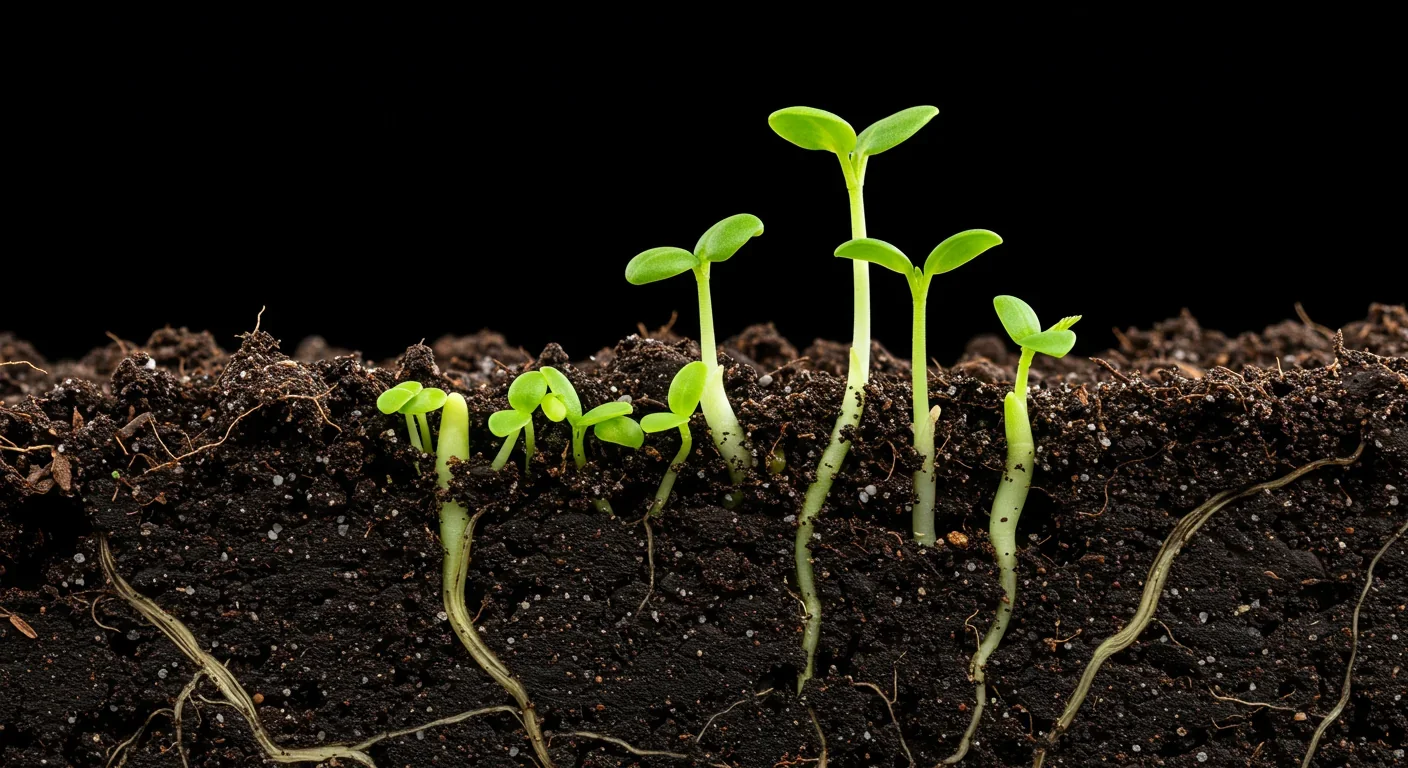
Plants and soil microbes form powerful partnerships that can clean contaminated soil at a fraction of traditional costs. These phytoremediation networks use biological processes to extract, degrade, or stabilize toxic pollutants, offering a sustainable alternative to excavation for brownfields and agricultural land.

Renters pay mortgage-equivalent amounts but build zero wealth, creating a 40x wealth gap with homeowners. Institutional investors have transformed housing into a wealth extraction mechanism where working families transfer $720,000+ over 30 years while property owners accumulate equity and generational wealth.

AlphaGo revolutionized AI by defeating world champion Lee Sedol through reinforcement learning and neural networks. Its successor, AlphaGo Zero, learned purely through self-play, discovering strategies superior to millennia of human knowledge—opening new frontiers in AI applications across healthcare, robotics, and optimization.